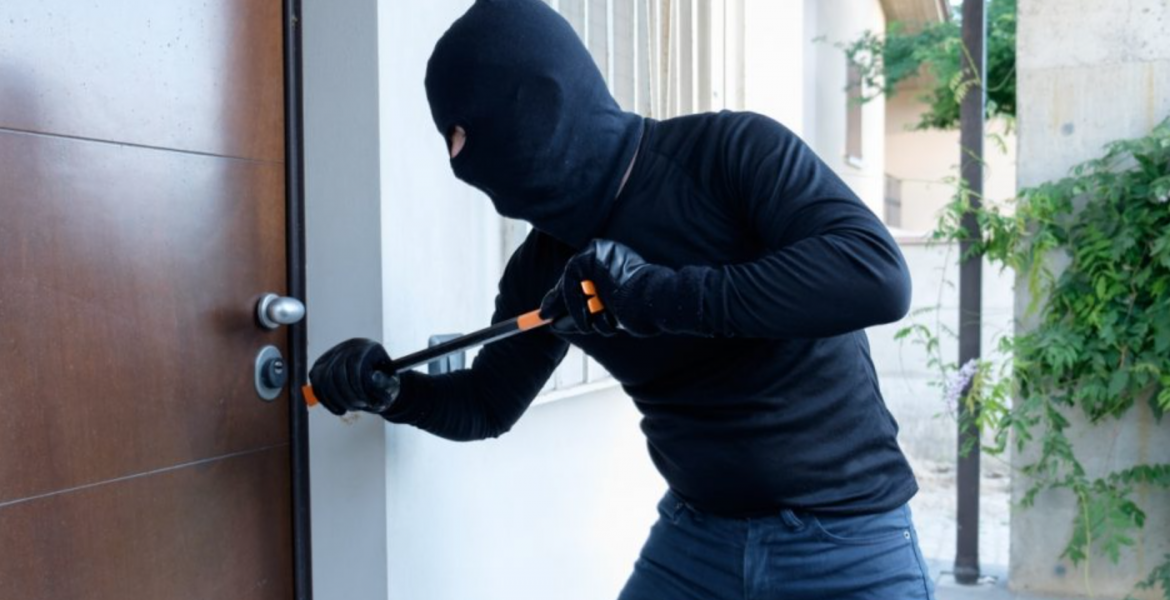SAN ANGELO, TX — Behind a high security gate on the north side of San Angelo’s airport, Mathis Field, an ex-Navy pilot, call sign “Slow Mo,” led me to the covered parking area. Inside the old Border Patrol building there, a new kind of operation is underway.
Everyone I met inside the facility doesn’t want their real name revealed in the press. They and their families could become targets in the narcotics trafficking war underway on the Texas-Mexico border. These men and women, 85 percent of whom are Iraq or Afghanistan military veterans, are providing federal, state, and local law enforcement a bird’s eye view of the porous border with Mexico, where drug and human traffickers, until now, have enjoyed free reign.
“Grab a seat. What you’re about to see is better than what you’ll see on Showtime,” said Jammer. Clad in a desert camo flight suit, he is the supervisor of flying ops inside the dimly lit command post. On the walls are 12 flat screen monitors, each displaying an integral part of the day’s mission fed to them via real time data links from what is officially called an Unmanned Aircraft System, or UAS, flying high above a specified location down south, on the Rio Grande.
In Washington D.C., Homeland Security spokesmen are adamant that the press not call them “drones.” Although the equipment and concepts of their operation were born in the hot zones of the Middle East where its operators proudly promote the “drone” moniker.
Flying out of Mathis Field is the MQ-9 Predator B, an unmanned single turboprop drone equipped with similar sensors the Department of Defense developed to chase Al Qaeda leaders hiding in the mountains of Tora Bora, Afghanistan.
Mounted on these drones is a sensor called the “VADER,” which are the initials for Vehicle and Dismount Exploitation Radar. Its two pods on the right wing’s hard points of the Predator, can see in the dark, in real time. Using that sensor, from inside this command post in San Angelo, these federal Homeland Security agents are directing a piece of the drug war.
The VADER’s software can superimpose radar imagery atop infrared and color high definition video, along with a database of symbols, to watch smugglers approach and cross the Rio Grande. They can even track them in densely populated areas, though it requires more skill. The VADER can detect movement, too, and alert the sensor operators of where the bad guys and good guys are.
“See those guys,” Willy P, who heads the pilot operations, described what could have been going down the afternoon I was there. Four men could have been observed crossing from the Rio Grande somewhere near Eagle Pass. “Those are scouts,” he said. The scouts clear the area before the smugglers bring drugs in backpacks across the Rio Grande.
Real time communications with federal law enforcement officers on the ground commences. They think they have their targets. The feds inform the local law enforcement to be visible. “They’ll tell him to park at the Dairy Queen. Look like they’re not engaged,” Willy P said.
The traffickers are watching and its not just the four scouts. They are everywhere down there. The smugglers take the bait of unengaged LE, and one of the four drug smuggling scouts clears a pickup truck to proceed to a rendezvous point.
More smugglers with backpacks follow one another across the low water crossing on the Rio Grande and proceed to where the pickup is headed. All of this is being watched in real time on the flat screens in the command post.
On the ground in Maverick County, hidden all around, are undercover federal agents, ready to pounce. But not yet.
The VADER follows every move of all the players, and symbology affixed to each subject informs the analysts who is who, and what direction they’re headed.
They don’t move in just yet. The pickup is going to inform them where the “safe house” is. “I bet it’s a nice, a big house,” Willy P explains. The smugglers load their backpacks into the back of the pickup and the pickup departs the rendezvous point, taking a circuitous route to the stash house, not realizing the VADER tracks them. The sensor operator can even zoom in on each scout and determine if the subject is armed.
MQ-9 orbits high above them somewhere between FL 180, or 18,000 feet, and where the airliners operate above FL 290. Though the drone can fly much higher, newer FAA rules called Reduced Vertical Separation Minima, or RVSM, keep the drones below FL 290 for air traffic safety.
One pilot and a sensor operator are located outside the main CBP building at Mathis in portable pilot command modules. The air conditioned, self-contained modules are sturdy enough to sustain incoming fire. The doorway is a hatch that can be bolted down.
Inside, the pilot is dealing with moderate turbulence between Eagle Pass and Del Rio. The computer-operated flight controls don’t do well in turbulence. He’s attempting to find a patch of clear airspace. Although it’s a clear, Visual Flight Rules, or VFR, day, the pilot has been operating IFR without his front camera. “Bandwidth,” he said. By flying without the forward-looking camera imagery being transmitted back to San Angelo, more bandwidth is available for the other onboard sensors being used to conduct the interdiction mission.
The MQ-9 is controlled via line-of-sight data links from high-powered dish antennas visible from Knickerbocker Road. There are several control antennas, each mounted on a trailer. The trailers are parked along the edge of the tarmac on the north side of Mathis Field.
Onboard the MQ-9 are two antennas that communicate with the trailer-mounted antenna, one on the bottom and another on the top. If line-of-sight communications are lost, the nose of the MQ-9 contains a satellite uplink antenna. “There’s a lot of latency in the satellite connection, so it’s always best to use the light-of-sight signal,” explained Willy P. But the satellite connection is adequate to conduct all aspects of the mission except landing. “There’s about a two-second delay over the satellite. Not the best kind of control when attempting to land,” he said.
Meanwhile, back in the command post, the VADER sensor mounted in the drone high in the sky follows the pickup to the stash house. Undercover agents have already surrounded the house as the front gates open to let the pickup inside the compound. The undercover agents move in and pounce. As it all unfolds, it is being watched inside the San Angelo command post.
Willy P smiles. That house, he said, could become a gift to Maverick County. Everyone in the house was under arrest and the real estate was being seized, along with the cell phones, computers, and of course, the drugs.
On the wall inside the piloting pod, next to the pilots, are two racks of servers. Much of it is for data storage, Willy P said. After the raid, the information is downloaded and sealed for federal court. It will be a big part of the evidence a U.S. Attorney can use against the traffickers they just took down.
Last month, the Tom Green County Sheriff’s Office announced the largest drug bust in over two years. It was for 6.5 pounds of Methamphetamine and two suspects.
WATCH: An MQ-9 returns to Mathis Field after a long mission:
To place the size of the drug seizures into perspective, the Predator ops here have been credited with busts seizing 3,000 pounds of drugs and 11 vehicles during a four-week deployment in 2016. Last year, during a second-run deployment, the Predator ops were credited with the arrests of 17 subjects, capturing 11 vehicles, and seizing 7,000 pounds of drugs over several weeks. This year, all of the numbers aren’t in, but in January, they helped seize 1,000 pounds of drugs, all marijuana from Mexico.
The Predators have also aided in the arrests of over 300 illegal aliens crossing the Rio Grande.
Willy P is confident they can almost shut the entire border down if they were given the assets. Right now, the detachment at Mathis flies three Predators, each with a 12-20-hour loiter time. “Give me 12 of these things and we can watch the entire border all the time, from El Paso to Brownsville,” he said.
The Predator is currently deployed here for temporary duty assignments, as Mathis is one of very few airfields in the U.S. certified for U.S. Customs and Border Protection Air and Marine Operations takeoffs and landings of the Predator UAS. The crews are permanently based at NAS Corpus Christi. About 40 personnel travel here, and are housed in San Angelo’s motels, while these operations are ongoing.
Would San Angelo make sense as a permanent duty station? “You bet,” Willy P said. “San Angelo is in a perfect location to reach the entire Texas-Mexico border.”
Subscribe to the LIVE! Daily
Required






Comments
Listed By: Del Velasquez
Excellent story!!!
- Log in or register to post comments
PermalinkListed By: Tim Worley
Joe-As a pilot, I appreciate the accuracy of your reporting of things aviation related. There is no embellishment or misrepresenting of the facts. The terminology is always correct and explained in a way non-aviators can readily understand.
This article exposes the importance of securing our border. The simplistic argument about people coming here for a better life does not address truth about drugs and other criminal activity that is taking place daily and never reported in the press. Good job Joe, and the members of our CBP here and elsewhere.
- Log in or register to post comments
PermalinkI grew up in the West during the times of subterranean Nuclear testing and development of stealth technologies, and will be the first say this is a great step for our city. The common San Angeloiean has don’t see the the technology compies that are here providing support to our nation, and its people. It’s a great time to be in San Angelo Tx.
- Log in or register to post comments
PermalinkYo, Hyde - Daddy O, you didn’t see any flight plans? That thing don’t fly over here east of Christoval does it? Just saying all my stuff is for personal herbal aroma therapy use only. :-). But all joking aside. You probably scared some dudes in grape creek out in the boonies with this here article.
- Log in or register to post comments
PermalinkListed By: Old Salt
Porous border? We are at a 46 year low. This makes for good ratings and political rhetoric. More drugs are intercepted at sea than Land by an astronomical amount. But hey if it tows the far right line of illegal immigration hysteria. Remember thought those same drones can see into your back yard as well.
- Log in or register to post comments
PermalinkYup, boats can carry more powder than a 90lb Mexican. And yup, if they leave all those little sensors on as they fly over the Bluffs or Bentwood they can see it all. I hear they saw Bunny and Buffy from the country club drinking a $4.00 bottle of merlot from wal-mart. Oh, The horror.
- Log in or register to post comments
PermalinkListed By: Nathan Schmidt
In the last ten years America has seen the largest per person drug usage in our nations recorded history and I fail to find the numbers to support the astronomy grade claim of interceptions at sea as compared to land... every shred of research I have done shows the SWB to be the main line for the majority of smuggling that occurs. Since 2006, around 55,000 lives have been lost in the drug war on the border but we're at a 46 yr. low? In 2015 we saw more deaths from drug overdoses than the entirety of the Vietnam War... Between 59,000 and 65,000 lives in one year. I can't pull up numbers like that from the war on drugs started by Nixon in '72 but maybe I'm just an ignorant/paranoid far right thinking youngster. I would laugh if drones looked in my backyard, they probably would think I have a decent grow going considering the hundred or so Chinese Jujube trees that some idiot planted before I moved in. Cell phone apps and social media sites scare me more than drones even though they can see much more than your backyard.
- Log in or register to post comments
PermalinkListed By: Old Salt
55,000 Mexicans have died, in Mexico due to the insatiable drug appetite of Americans. 59,000 to 65,000 overdose deaths in America, " most of the overdose deaths were likely linked to opioids and an increasing amount were linked to fentanyl.". Guess where those come from? Not on the backs of 90 lb Mexicans or a speeding boat. The 46 year low....that's foot traffic of the next generation of roofers, farm workers and construction workers. China Berry trees make for good shade, and fast growing. But the wood is soft so best to clear away from structures.
- Log in or register to post comments
PermalinkListed By: Rita Repulsa
According to recent polls conducted in Mexico among pole vaulters and construction contractors specializing in subterranean structures, 98.3% of those polled approve of Donald Trump's border strategy. One sports team known as "Equipo Parkour Azteca" has even erected a standing piñata statue in his honor, which is not to be touched.
My question is, where are we getting these numbers from, and what was the methodology for collecting the data?
- Log in or register to post comments
PermalinkListed By: Nathan Schmidt
Reports put out by the Border Patrol and I.C.E. by way of internet.
- Log in or register to post comments
PermalinkListed By: Rita Repulsa
No pushback from the choir here, sir, just pointing out that each side is making numerical claims about the predicament on the border without providing any references to clarify the situation for addlepated innumerates such as myself.
I agree with the gist of what you've written.
- Log in or register to post comments
PermalinkListed By: Nathan Schmidt
What should we do then? If Mexican and American lives are being lost because of our insatiable appetite for drugs then as far as I can see we have 2 options... Shut down and monitor our border and make opioids more difficult to obtain... We can't stop humankinds desire for drugs but we can make a dent in the problem. What does it say about the folks in Mexico who die to feed our appetite for drugs when their primary driving force to feed it is the money gained by doing so... Tighten the SWB and we stop people from getting what they want, money and drugs, both problems get impacted. We are already working on tightening up the opiate issues here... As much red tape as we have to fight through life as Americans who were born and raised here, don't we have the responsibility to ensure that others have to walk the line if they want to be a part of this Country as well? I have no problem if a Mexican national wants to come here if they go through the proper channels, the loopholes in our laws and border securities have given quite a few opportunities to folks already. I don't place my trust in government to always do the right thing and I believe that everyone was born with certain inalienable rights, not just American's but we also have some protocol to follow if you want to be here with us... Do that and I'll be happy to call you my fellow American.
- Log in or register to post comments
PermalinkListed By: Old Salt
"Visa overstays have exceeded those entering illegally every year since 2007, and there have been half a million more overstays than illegal entries since 2007."
Politicising the issue keeps us from solving the problem. The left and the right depend on it to raise money. But one thing is for sure billions of dollars for a wall is not a solution.
- Log in or register to post comments
PermalinkListed By: Nathan Schmidt
Illegal immigration and visa overstays are an outstanding problem that already costs us much money, do you have any idea what we should do as a nation regardless of government agendas and personal biases? I would pit my tax dollars in a wall and the extra military resources at the border in comparison with any other option I've heard pitched. We don't have to like an option for it to have an effect. Tell me, should we then remain apathetic to the situation because the left and the right want money and just let things be? There will always be problems in the world, drugs, borders, discrimination, crooked politicians... Still a wall is something, I.C.E. arrests at the courthouse on illegals in sanctuary cities is another, I hear plenty of political rhetoric about the issue but I hear no better solutions than what we are actually doing.
- Log in or register to post comments
PermalinkListed By: Nathan Schmidt
https://www.pbs.org/wgbh/frontline/article
Data released by the Mexican government shows between 07' and 14' more than 164,000 were victims of homicide, more than the civilian death toll of Afghanistan and Iraq combined.
https://www.drugabuse.gov/ related-topics
Drug overdose statistics for America in 2016- 64,000
Sorry if the links don't actually work but that's what I'm working off of.
- Log in or register to post comments
PermalinkPost a comment to this article here: